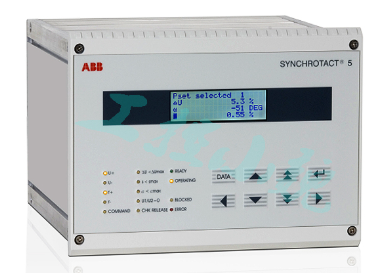China Energy Big Data Report - Power industry development
Electric power production
1. The national electricity generation increased by 9.7% year-on-year, and the full-caliber non-fossil energy generation increased by 12.0% year-on-year
In 2021, the national power production and supply capacity will be further improved, supply and demand will be generally balanced, and the structure will be further optimized. According to the Statistical communique on National Economic and Social Development released by the National Bureau of Statistics, in 2021, China's power generation will reach 8,534.25 billion KWH, up 9.7 percent year on year and 6 percentage points higher than the previous year. Among them, the thermal power generation was 5.805.87 billion KWH, up 8.9% year on year; Hydropower generation was 1.339 billion KWH, down 1.2% year on year. Nuclear power generated 407.52 billion KWH, up 11.3 percent year on year. According to the statistics of the full caliber of the China Electricity Union, wind power and solar power generation were 655.6 billion KWH and 327 billion KWH, respectively, an increase of 40.5% and 25.2%. Biomass power generation was 163.7 billion KWH, up 23.6% year on year
The power generation structure has been continuously optimized. In 2021, non-fossil energy power generation will reach 2.9 trillion KWH, up 12.0 percent year on year. It accounted for 34.6% of the total power generation of the whole caliber, an increase of 0.7 percentage points. The contribution of wind and solar power generation to the country's electricity supply continues to increase. Full-caliber coal power generation was 5.03 trillion KWH, up 8.6% year-on-year, accounting for 60.0% of the total power generation, down 0.7 percentage points year-on-year.

2. China's total installed power capacity reached 2.4 billion kilowatts, up 7.9% year-on-year
By the end of 2021, China's newly installed power generation capacity will be 176.29 million kW, down 7.9 percent year on year. China's installed power generation capacity was about 2.38 billion kilowatts, an increase of 7.9%, or a contraction of 1.7 percentage points.
In the past decade, China's installed power generation capacity has continued to grow, and the total scale of new power generation capacity has exceeded 100 million kilowatts for nine consecutive years. The growth rate of total installed capacity showed a fluctuating trend, declining continuously from 2017 to 2019, especially in 2018 and 2019, affected by factors such as changes in power supply and demand, the installed capacity of new hydropower, nuclear power and solar power generation was almost halved, resulting in a continuous decline in the scale of new installed capacity in two years. In 2020, driven by the rapid growth of hydropower, wind power and solar power installed capacity, the new installed capacity has increased significantly, driving the annual installed capacity growth rate to rebound sharply. In 2021, the new installed capacity of thermal power and wind power decreased by 18% and 34%, and the overall new scale decreased by 7.9% year-on-year.
3. The proportion of new non-fossil energy power generation capacity was nearly 80%, and the total installed capacity of non-fossil energy exceeded that of coal power for the first time
In 2021, the installed capacity of thermal power will increase by 46.28 million kilowatts, grid-connected hydropower and wind power will reach 23.49 million kilowatts and 47.57 million kilowatts respectively, solar power will reach 54.93 million kilowatts, nuclear power will reach 3.4 million kilowatts and biomass power will reach 8.08 million kilowatts. The installed capacity of non-fossil energy power generation increased by 138.09 million kW, accounting for 78.3% of the total installed capacity of new power generation, an increase of 5.2 percentage points year-on-year.
By the end of 2021, the installed capacity of full-caliber thermal power in the country was 1.30 billion kilowatts, up 4.1% year-on-year, of which coal power was 1.11 billion kilowatts, up 2.8% year-on-year, accounting for 46.7% of the total installed power generation capacity, down 2.3 percentage points year-on-year. In 2021, the installed capacity of full-caliber non-fossil energy reached 1.12 billion kilowatts, an increase of 13.4%, accounting for 47% of the total installed power generation capacity, surpassing the installed capacity of coal power for the first time. The installed capacity of hydropower, wind power and solar power exceeded 300 million kilowatts. Among them, the installed capacity of hydropower is 390 million kW (conventional hydropower is 350 million kW, pumped storage is 36.39 million kW); Wind power 330 million kilowatts (onshore 300 million kilowatts, offshore 26.39 million kilowatts); Installed solar power capacity of 310 million kilowatts (centralized 200 million kilowatts, distributed 110 million kilowatts, solar thermal 570,000 kilowatts). The installed capacity of wind power connected to the grid has ranked first in the world for 12 consecutive years, the installed capacity of solar power connected to the grid has ranked first in the world for seven consecutive years, and the installed capacity of offshore wind power has ranked first in the world. Nuclear power 53.26 million kilowatts. Biomass power generation was 37.98 million kilowatts.
From the perspective of installed capacity growth, in 2021, wind power and solar power installed capacity increased significantly at a rate of more than 15%, solar power increased by 20.9%, and wind power increased by 16.6%. Nuclear power grew by 6.8% year-on-year. Hydropower grew 5.6 per cent year on year. Thermal power increased by 4.1% year-on-year, of which, coal power increased by 2.8% year-on-year, accounting for the proportion of total installed power generation capacity decreased by 2.3 percentage points year-on-year.

4. The utilization hours of power generation equipment increased by 60 hours year-on-year
In 2021, the utilization hours of power generation equipment in the country will be 3,817 hours, an increase of 60 hours year-on-year. The utilization hours of thermal power equipment were 4,448 hours, an increase of 237 hours year-on-year; Among them, 4,586 hours of coal power, an increase of 263 hours; Gas and electricity 2,814 hours, an increase of 204 hours year-on-year. Water and electricity 3,622 hours, a decrease of 203 hours. Nuclear power 7,802 hours, an increase of 352 hours year-on-year. Grid-connected wind power for 2,232 hours, an increase of 154 hours year-on-year. Grid-connected solar power generation for 1,281 hours, the same as the previous year.
Secondary power consumption
1. Electricity consumption in the whole society increased by 10.3% year-on-year, with the growth rate falling quarter by quarter
According to the data released by the National Energy Administration, in 2021, the whole society consumed 8312.8 billion KWH of electricity, an increase of 10.3% over the same period in 2019, an increase of 14.7% over the same period in 2019, and a two-year average increase of 7.1%. Influenced by factors such as the overall economic recovery, foreign trade and export, and the low base effect of power consumption growth caused by the novel coronavirus pneumonia epidemic, electricity consumption has rebounded sharply. In 2021, the growth rate of electricity consumption in the whole society reached a new high in the past decade, slightly lower than the 14.8% in 2010 and 12.0% in 2011.
In the first, second, third and fourth quarters, the electricity consumption of the whole society increased by 21.2%, 11.8%, 7.6% and 3.3% respectively, and the year-on-year growth rate fell significantly quarter by quarter.
In the first quarter, the electricity consumption of the whole society drove the annual electricity consumption to increase by 4.5 percentage points year-on-year, an increase of 14.4% over the same period in 2019. Among them, secondary power consumption became the main driving force for the growth of electricity consumption in the whole society, with a year-on-year increase of 24.1%, an increase of 15.4% over the same period in 2019, and a contribution rate of 72.8% to the growth of electricity consumption in the whole society. In the second quarter, the growth rate of electricity consumption in various industries declined compared with the first quarter, but the power consumption in primary industry still maintained a steady and substantial growth, and the growth rate of power consumption in tertiary industry recovered to the same period in 2019. Although the growth rate of electricity consumption in the high-tech and equipment manufacturing industry was significantly higher than the average level of the manufacturing industry in the same period, due to the gradual implementation of the blind development policy of the state to resolutely curb the "two high" projects, the growth rate of the four major high-load energy industries gradually fell, the growth rate of the second industry in the third and fourth quarters was directly affected, and some areas were affected by the epidemic. In 2021, the two-year average growth rate of electricity consumption in the whole society is 7.1%, and the two-year average growth rate in each quarter is 7.0%, 8.2%, 7.1% and 6.4%, maintaining steady growth overall.
2. The structure of electricity consumption continues to optimize, and the proportion of secondary power consumption decreases year by year
In 2021, while the electricity consumption of the whole society maintains steady growth, the electricity consumption structure is increasingly optimized. The primary industry consumed 102.3 billion KWH of electricity, up 16.4% year on year and up 14.6% on average in two years. Electricity consumption in the secondary industry was 5,613.1 billion KWH, up 9.1% year on year and up 6.4% on average in two years. Electricity consumption in the tertiary industry was 1,423.1 billion KWH, up 17.8% year on year and up 9.5% on average in two years. Domestic electricity consumption of urban and rural residents was 1,174.3 billion KWH, up 7.3 percent year on year and up 7.0 percent on average in the past two years.

The proportion of electricity consumption in the secondary industry gradually shrank, and the proportion of primary industry and tertiary industry slightly expanded. With the continuous improvement of rural electricity conditions, the further rapid development of high-tech and equipment manufacturing, charging and replacing service industries, emerging service industries, and the improvement of urban and rural residents' living standards, the electricity structure will further tilt to the primary and tertiary industries.
3. Major energy consumption indicators have continued to decline, and carbon emissions have been effectively reduced
The national standard coal consumption for power supply continued to decline. According to the data of the National Energy Administration, the standard coal consumption of the national power supply in 2021 will be 302.5 g/KWH, down 2.4 g/KWH year-on-year, and down 22.5 g/KWH from 2012.
The national line loss ratio maintained a downward trend. In 2021, the national line loss rate of 5.26%, down 0.34 percentage points year-on-year, to maintain a downward trend, down 1.48 percentage points from 2012.
The power consumption rate in 2021 has not yet seen public data, but the overall trend is downward. In 2020, the national power consumption rate dropped to 4.65%, 0.02 percentage points lower than the previous year. Among them, hydropower was 0.25%, an increase of 0.01 percentage points over the previous year, and thermal power was 5.98%, a decrease of 0.03 percentage points over the previous year.
Steady progress has been made in upgrading coal-fired power plants to ultra-low emissions, and pollutant emissions have dropped significantly. By the end of 2020, 89 percent of the country's total installed coal power capacity has achieved ultra-low emissions. According to the statistics of the China Electricity Union, in 2020, the total amount of electricity smoke emissions in the country is about 155,000 tons, a decrease of 15.1% year-on-year. Sulfur dioxide emissions were about 780,000 tons, down 12.7 percent year on year. Nitrogen oxide emissions were about 874,000 tons, down 6.3 percent year on year.
Carbon emissions in the power sector have been effectively reduced. According to the data of China Electricity Union, carbon dioxide emissions per unit of thermal power generation in 2020 will be about 832 grams/KWH, 20.6% lower than in 2005; Carbon monoxide emissions per unit of thermal power generation are about 565 g/KWH, 34.1% lower than in 2005. From 2006 to 2020, through the development of non-fossil energy, reducing power supply coal consumption and line loss rate and other measures, the power industry has reduced carbon dioxide emissions by about 18.53 billion tons, effectively slowing down the growth of total carbon dioxide emissions in the power industry.
Steady progress has been made in building a national carbon market. In 2021, the Opinions on Fully, Accurately and Comprehensively Implementing the New Development Concepts to Achieve Carbon Peak Carbon Neutrality and the Action Plan for Achieving Carbon Peak before 2030 were successively released. On July 16, the national carbon market was officially launched, and the first compliance cycle is the whole year of 2021, including 2,162 key emission units in the power generation industry, covering about 4.5 billion tons of carbon dioxide emissions, which is the largest carbon market in the world. As of December 31, the national carbon market has been running for 114 trading days, with a cumulative volume of 179 million tons of carbon emission allowances and a cumulative turnover of 7.661 billion yuan.

Three power infrastructure
1. The national power investment reached a new high in the past decade, and the investment structure was adjusted again
Data from the National Energy Administration show that the total investment in electric power projects in 2021 will reach 1048.1 billion yuan, an increase of 2.9% year-on-year. Among them, the investment in power supply capital construction was 553 billion yuan, and the investment in power grid capital construction was 495.1 billion yuan. Since 2018, the investment in power engineering construction has increased year after year.
The net source investment gap continues to narrow. In 2021, the national investment in power supply infrastructure accounted for 52.8% of power investment, an increase of 0.9 percentage points over the previous year; Power grid infrastructure investment accounted for 47.2% of power investment, 0.9 percentage points lower than the previous year.
From the data of the past ten years, the overall growth trend of power investment. The average annual investment during the 12th Five-Year Plan period is about 780 billion yuan, and the average annual investment during the 13th Five-Year Plan period is about 890 billion yuan. In the first year of the 14th Five-Year Plan, investment in power engineering construction hit a new high in ten years. The proportion of power grid investment showed an overall upward trend during the "Twelfth Five-Year Plan" period, and an overall downward trend during the "thirteenth Five-Year Plan" period. The "14th Five-Year Plan" began to decline.
2. Investment in new energy increased significantly, and investment in thermal power declined for five consecutive years
In 2021, the national power supply capital construction investment completed 553 billion yuan, an increase of 4.5%. Among them, the investment in hydropower was 98.8 billion yuan, a decrease of 7.4% year-on-year, accounting for 17.9% of the investment in power supplies. Thermal power investment was 67.2 billion yuan, up 18.3% year on year, accounting for 12.2% of power investment. Nuclear power investment of 53.8 billion yuan, up 42% year-on-year, accounting for 9.7% of the proportion of power investment, reversing the "13th Five-Year" period of investment has been shrinking situation.
Since the "12th Five-Year Plan", new energy investment has increased. In 2019-2021, due to the impact of the affordable Internet access policy, wind power investment soared, and the proportion of wind power investment in 2020 and 2021 was 50.1% and 44.8% respectively.
- EMERSON
- Honeywell
- CTI
- Rolls-Royce
- General Electric
- Woodward
- Yaskawa
- xYCOM
- Motorola
- Siemens
- Rockwell
- ABB
- B&R
- HIMA
- Construction site
- electricity
- Automobile market
- PLC
- DCS
- Motor drivers
- VSD
- Implications
- cement
- CO2
- CEM
- methane
- Artificial intelligence
- Titanic
- Solar energy
- Hydrogen fuel cell
- Hydrogen and fuel cells
- Hydrogen and oxygen fuel cells
- tyre
- Chemical fiber
- dynamo
- corpuscle
- Pulp and paper
- printing
- fossil
- FANUC
- Food and beverage
- Life science
- Sewage treatment
- Personal care
- electricity
- boats
- infrastructure
- Automobile industry
- metallurgy
- Nuclear power generation
- Geothermal power generation
- Water and wastewater
- Infrastructure construction
- Mine hazard
- steel
- papermaking
- Natural gas industry
- Infrastructure construction
- Power and energy
- Rubber and plastic
- Renewable energy
- pharmacy
- mining
- Plastic industry
- Schneider
- Kongsberg
- NI
- Wind energy
- International petroleum
- International new energy network
- gas
- WATLOW
- ProSoft
- SEW
- wind
- ADVANCED
- Reliance
- YOKOGAWA
- TRICONEX
- FOXBORO
- METSO
- MAN
- Advantest
- ADVANCED
- ALSTOM
- Control Wave
- AB
- AMAT
- STUDER
- KONGSBERG
- MOTOROLA
- DANAHER MOTION
- Bently
- Galil
- EATON
- MOLEX
- Triconex
- DEIF
- B&W
- ZYGO
- Aerotech
- DANFOSS
- KOLLMORGEN
- Beijer
- Endress+Hauser
- MOOG
- KB
- Moxa
- Rexroth
- YAMAHA
- Johnson
- Westinghouse
- WAGO
- TOSHIBA
- TEKTRONIX


Email:wang@kongjiangauto.com






















































































































